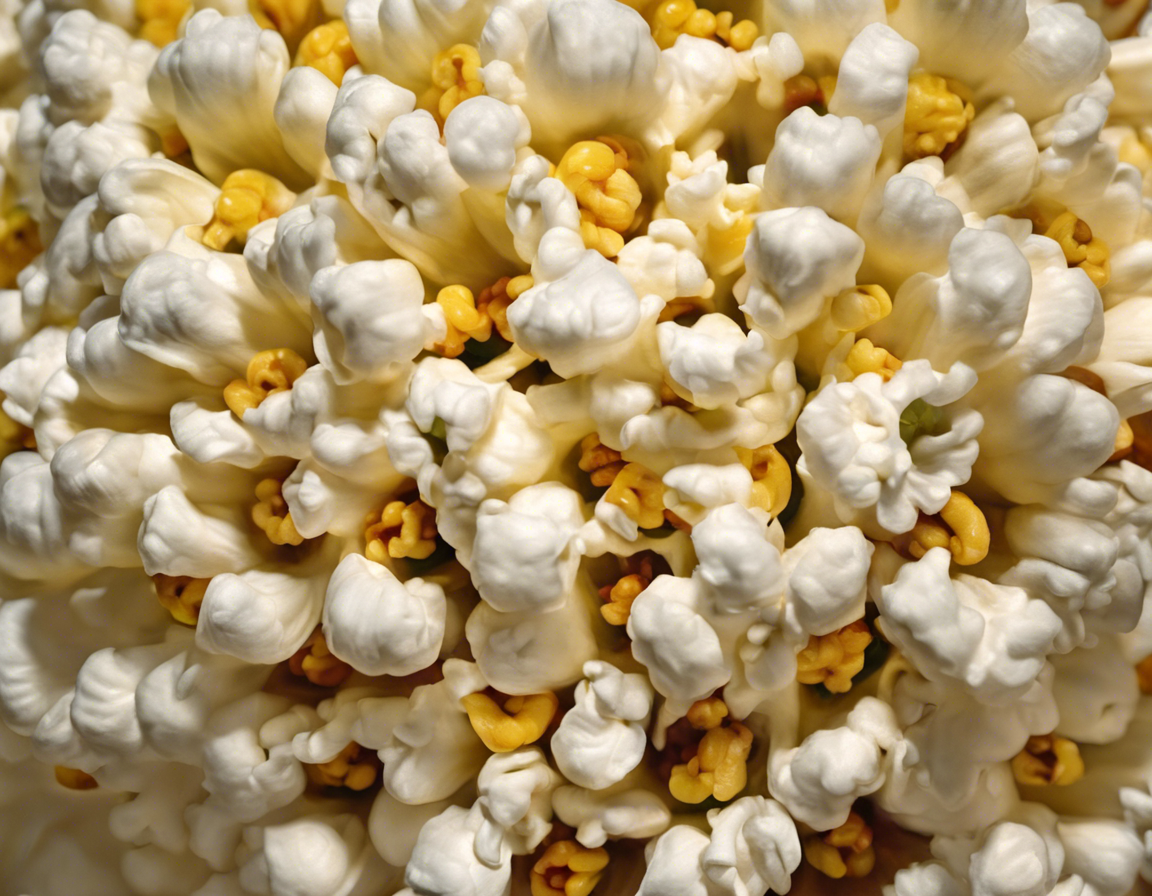Popcorn flowers, also known as Plagiobothrys spp., are delicate and charming wildflowers that belong to the Boraginaceae family. These small, dainty flowers are native to North America and can be found in a variety of habitats, from grasslands and meadows to woodlands and forest edges. Despite their name, popcorn flowers do not actually have any ties to the popular snack, but rather their name comes from the appearance of their small, clustered flowers that resemble popped popcorn kernels.
Understanding Popcorn Flowers
Popcorn flowers come in a variety of species, with each species featuring slightly different characteristics in terms of size, color, and habitat preference. Some common species of popcorn flowers include Plagiobothrys nothofulvus, Plagiobothrys tenellus, and Plagiobothrys collinus. These flowers typically bloom in the spring and summer months, adding a splash of color to their surroundings with their tiny white, yellow, purple, or pink flowers.
Characteristics of Popcorn Flowers
- Size: Popcorn flowers are small, with some species growing less than an inch tall, while others can reach up to 12 inches in height.
- Color: The flowers of popcorn flowers can come in various shades, including white, yellow, purple, and pink.
- Leaves: The leaves of popcorn flowers are typically narrow and elongated, with a slightly hairy texture.
- Habitat: Popcorn flowers are adaptable plants that can thrive in a range of habitats, from dry, sandy soils to moist, fertile areas.
Growing Popcorn Flowers in Your Garden
If you’re looking to add a touch of charm and whimsy to your garden, consider growing popcorn flowers. These native wildflowers can be a delightful addition to any garden or landscape, attracting pollinators such as bees and butterflies with their nectar-rich blooms. Here are some tips for successfully growing popcorn flowers in your garden:
Planting Popcorn Flowers
- Choose the Right Location: Popcorn flowers prefer full sun but can also tolerate partial shade. Select a well-drained spot in your garden for planting.
- Prepare the Soil: Popcorn flowers thrive in soil that is sandy or loamy. Ensure good drainage to prevent waterlogging.
- Sow Seeds: Popcorn flowers can be grown from seeds. Sow the seeds directly into the ground in the spring or fall, covering them lightly with soil.
- Watering: Keep the soil moist but not waterlogged during the germination and early growth stages.
- Maintenance: Once established, popcorn flowers require minimal maintenance. Deadhead spent blooms to encourage continuous flowering.
Benefits of Popcorn Flowers
Aside from their aesthetic appeal, popcorn flowers offer several benefits to the ecosystem and garden environment. These wildflowers play a crucial role in supporting biodiversity and ecological balance. Here are some of the benefits of popcorn flowers:
- Pollinator Support: Popcorn flowers attract bees, butterflies, and other pollinators, helping to pollinate other plants in the area.
- Soil Health: The roots of popcorn flowers help improve soil health by preventing erosion and promoting microbial activity.
- Natural Beauty: Popcorn flowers add beauty and diversity to natural landscapes and garden settings, enhancing the overall aesthetic appeal.
Frequently Asked Questions (FAQs) About Popcorn Flowers
-
Are popcorn flowers invasive?
No, popcorn flowers are not considered invasive species. They are native wildflowers that play a beneficial role in supporting local ecosystems. -
Can popcorn flowers be grown indoors?
Popcorn flowers are best suited for outdoor cultivation as they require ample sunlight and well-drained soil to thrive. -
Do popcorn flowers have any medicinal properties?
While popcorn flowers are not typically used for medicinal purposes, some Native American tribes historically used certain species for their mild diuretic properties. -
How long do popcorn flowers bloom?
Popcorn flowers typically bloom in the spring and summer months, with each bloom lasting a few weeks. -
Can popcorn flowers grow in containers?
It is possible to grow popcorn flowers in containers, provided the container has good drainage and is placed in a sunny location. -
Do popcorn flowers self-seed?
Yes, some species of popcorn flowers are prolific self-seeders, readily spreading in favorable growing conditions. -
Are popcorn flowers deer-resistant?
Popcorn flowers are not considered deer-resistant and may be susceptible to browsing by deer in certain regions. -
Do popcorn flowers require fertilization?
Popcorn flowers do not typically require fertilization, as they are adapted to nutrient-poor soils. However, a light application of a balanced fertilizer can promote robust growth. -
Are popcorn flowers drought-tolerant?
Popcorn flowers are moderately drought-tolerant once established, but regular watering during dry spells can help maintain healthy growth and flowering. -
Can popcorn flowers be divided and transplanted?
While popcorn flowers can be divided and transplanted, they tend to have delicate root systems, so care should be taken to minimize root disturbance.
In conclusion, popcorn flowers are whimsical wildflowers that bring a touch of delicate beauty to natural landscapes and gardens. By understanding their characteristics, cultivation requirements, and benefits, you can appreciate these charming flowers even more. Consider adding popcorn flowers to your garden to attract pollinators, enhance biodiversity, and enjoy their captivating blooms throughout the growing season. Whether you’re a seasoned gardener or a nature enthusiast, cultivating popcorn flowers can be a rewarding experience that connects you to the wonders of the natural world.
